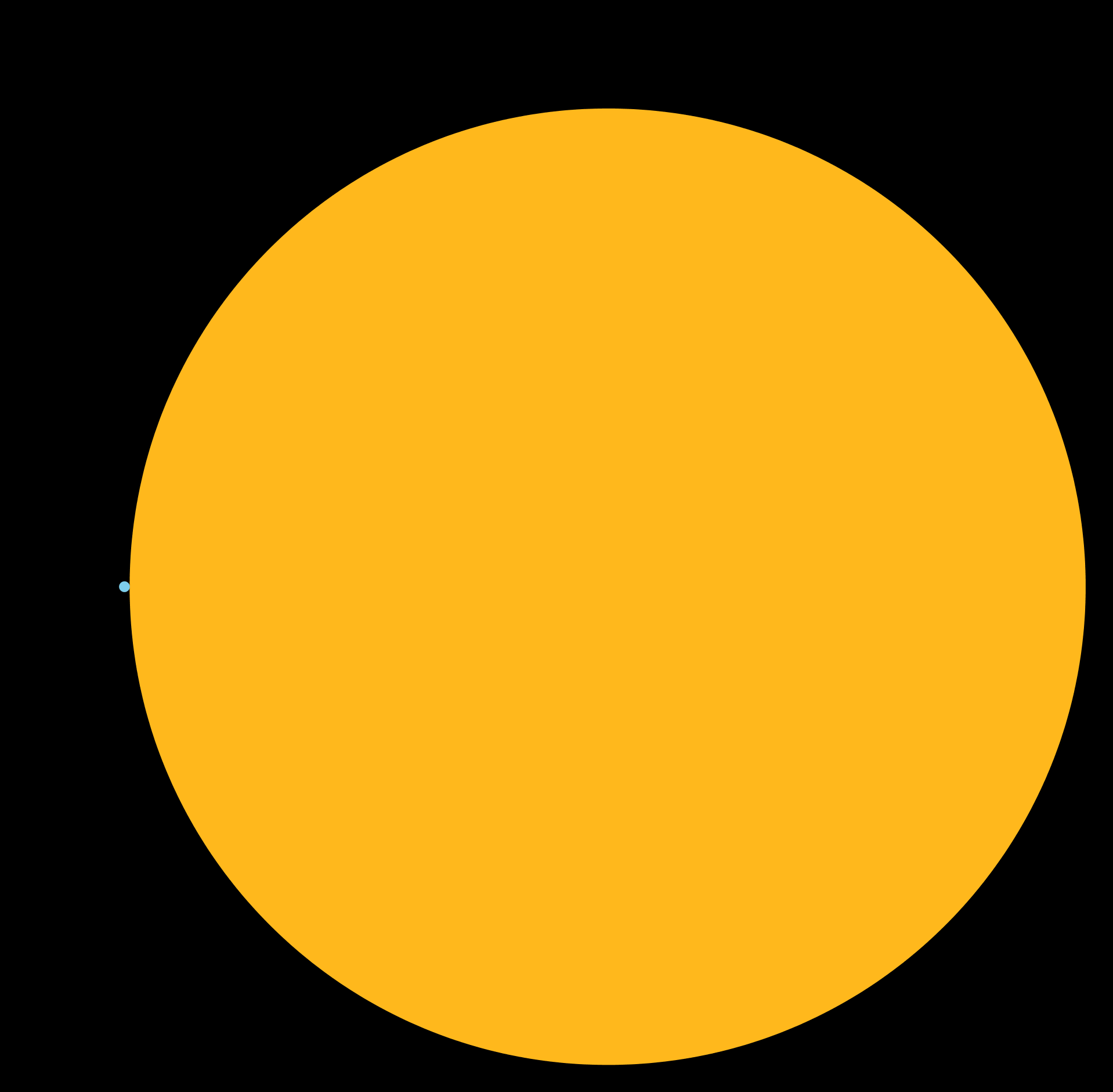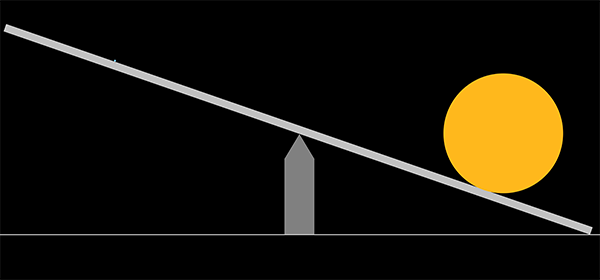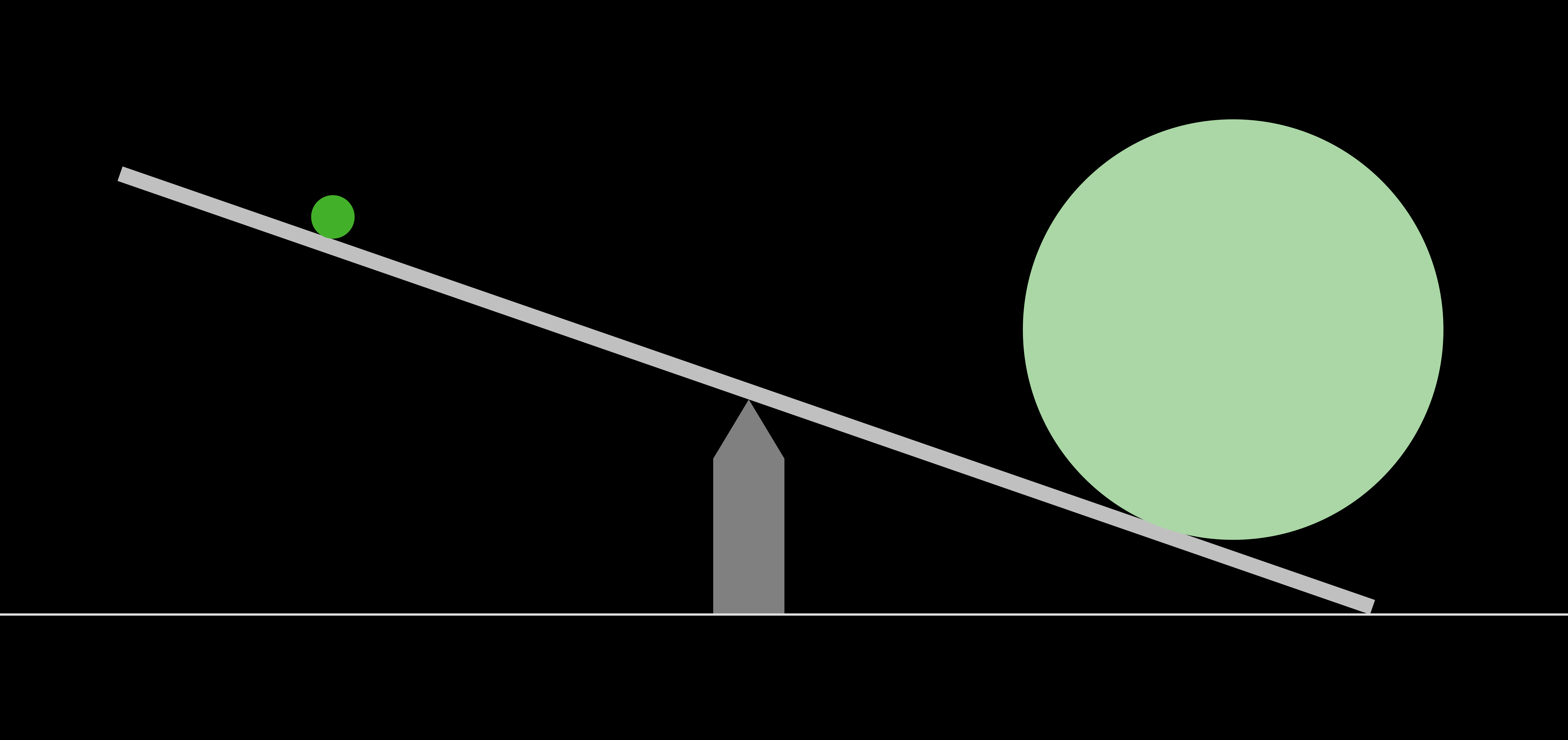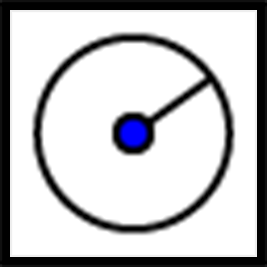14.1: True or False: Equations
Is each equation true or false? Explain your reasoning.
4\times 10^5 \times 4 \times 10^4= 4\times 10^{20}
\dfrac{7 \times 10^6}{2 \times 10^4} = (7\div2) \times 10^{(6-4)}
Let’s multiply and divide with scientific notation to answer questions about animals, careers, and planets.
Is each equation true or false? Explain your reasoning.
4\times 10^5 \times 4 \times 10^4= 4\times 10^{20}
\dfrac{7 \times 10^6}{2 \times 10^4} = (7\div2) \times 10^{(6-4)}
Use the table to answer questions about different creatures on the planet. Be prepared to explain your reasoning.
| Row 1 | creature | number | mass of one individual (kg) |
|---|---|---|---|
| Row 2 | humans | 7.5 \times 10^9 | 6.2 \times 10^1 |
| Row 3 | cows | 1.3 \times 10^9 | 4 \times 10^2 |
| Row 4 | sheep | 1.75 \times 10^9 | 6 \times 10^1 |
| Row 5 | chickens | 2.4 \times 10^{10} | 2 \times 10^0 |
| Row 6 | ants | 5 \times 10^{16} | 3 \times 10^{\text -6} |
| Row 7 | blue whales | 4.7 \times 10^3 | 1.9 \times 10^5 |
| Row 8 | Antarctic krill | 7.8 \times 10^{14} | 4.86 \times 10^{\text -4} |
| Row 9 | zooplankton | 1 \times 10^{20} | 5 \times 10^{\text -8} |
| Row 10 | bacteria | 5 \times 10^{30} | 1 \times 10^{\text -12} |
Use the table to answer questions about the Sun and the planets of the solar system (sorry, Pluto).
| object | distance to Earth (km) | diameter (km) | mass (kg) | |
|---|---|---|---|---|
| row 1 | Sun | 1.46 \times 10^8 | 1.392 \times 10^6 | 1.989 \times 10^{30} |
| row 2 | Mercury | 7.73 \times 10^7 | 4.878 \times 10^3 | 3.3 \times 10^{23} |
| row 3 | Venus | 4 \times 10^7 | 1.21 \times 10^4 | 4.87 \times 10^{24} |
| row 4 | Earth | N/A | 1.28 \times 10^4 | 5.98 \times 10^{24} |
| row 5 | Mars | 5.46 \times 10^7 | 6.785 \times 10^3 | 6.4 \times 10^{23} |
| row 6 | Jupiter | 5.88 \times 10^8 | 1.428 \times 10^5 | 1.898 \times 10^{27} |
| row 7 | Saturn | 1.2 \times 10^9 | 1.199 \times 10^5 | 5.685 \times 10^{26} |
| row 8 | Uranus | 2.57 \times 10^9 | 5.149 \times 10^4 | 8.68 \times 10^{25} |
| row 9 | Neptune | 4.3 \times 10^9 | 4.949 \times 10^4 | 1.024 \times 10^{26} |
Answer the following questions about celestial objects in the solar system. Express each answer in scientific notation and as a decimal number.
Estimate how many Earths side by side would have the same width as the Sun.

Estimate how many Earths it would take to equal the mass of the Sun.

Estimate how many times as far away from Earth the planet Neptune is compared to Venus.

Estimate how many Mercuries it would take to equal the mass of Neptune.

Choose two celestial objects and create a scale image of them in the applet below.
| Row 1 | object | distance to Earth (km) | diameter (km) | mass (kg) |
|---|---|---|---|---|
| Row 2 | Sun | (1.46) \boldcdot 10^8 | (1.392) \boldcdot 10^6 | (1.989) \boldcdot 10^{30} |
| Row 3 | Mercury | (7.73) \boldcdot 10^7 | (4.878) \boldcdot 10^3 | (3.3) \boldcdot 10^{23} |
| Row 4 | Venus | 4 \boldcdot 10^7 | (1.21) \boldcdot 10^4 | (4.87) \boldcdot 10^{24} |
| Row 5 | Earth | N/A | (1.28) \boldcdot 10^4 | (5.98) \boldcdot 10^{24} |
| Row 6 | Mars | (5.46) \boldcdot 10^7 | (6.785) \boldcdot 10^3 | (6.4) \boldcdot 10^{23} |
| Row 7 | Jupiter | (5.88) \boldcdot 10^8 | (1.428) \boldcdot 10^5 | (1.898) \boldcdot 10^{27} |
| Row 8 | Saturn | (1.2) \boldcdot 10^9 | (1.199) \boldcdot 10^5 | (5.685) \boldcdot 10^{26} |
| Row 9 | Uranus | (2.57) \boldcdot 10^9 | (5.149) \boldcdot 10^4 | (8.68) \boldcdot 10^{25} |
| Row 10 | Neptune | (4.3) \boldcdot 10^9 | (4.949) \boldcdot 10^4 | (1.024) \boldcdot 10^{26} |
Plot a point  for the center of each circle. Select the Circle with Center and Radius tool
for the center of each circle. Select the Circle with Center and Radius tool  and click on a point. When the dialog box opens, enter the radius.
and click on a point. When the dialog box opens, enter the radius.
Use the table to answer questions about professions in the United States as of 2012.
| profession | number | typical annual salary (U.S. dollars) | |
|---|---|---|---|
| row 1 | architect | 1.074 \times 10^5 | 7.3 \times 10^4 |
| row 2 | artist | 5.14 \times 10^4 | 4.4 \times 10^4 |
| row 3 | programmer | 1.36 \times 10^6 | 8.85 \times 10^4 |
| row 4 | doctor | 6.9 \times 10^5 | 1.87 \times 10^5 |
| row 5 | engineer | 6.17 \times 10^5 | 8.6 \times 10^4 |
| row 6 | firefighter | 3.07 \times 10^5 | 4.5 \times 10^4 |
| row 7 | military—enlisted | 1.16 \times 10^6 | 4.38 \times 10^4 |
| row 8 | military—officer | 2.5 \times 10^5 | 1 \times 10^5 |
| row 9 | nurse | 3.45 \times 10^6 | 6.03 \times 10^4 |
| row 10 | police officer | 7.8 \times 10^5 | 5.7 \times 10^4 |
| row 11 | college professor | 1.27 \times 10^6 | 6.9 \times 10^4 |
| row 12 | retail sales | 4.67 \times 10^6 | 2.14 \times 10^4 |
| row 13 | truck driver | 1.7 \times 10^6 | 3.82\times 10^4 |
Answer the following questions about professions in the United States. Express each answer in scientific notation.
Multiplying numbers in scientific notation extends what we do when we multiply regular decimal numbers. For example, one way to find (80)(60) is to view 80 as 8 tens and to view 60 as 6 tens. The product (80)(60) is 48 hundreds or 4,800. Using scientific notation, we can write this calculation as (8 \times 10^1) (6 \times 10^1) = 48 \times 10^2. To express the product in scientific notation, we would rewrite it as 4.8 \times 10^3.
Calculating using scientific notation is especially useful when dealing with very large or very small numbers. For example, there are about 39 million or 3.9 \times 10^7 residents in California. Each Californian uses about 180 gallons of water a day. To find how many gallons of water Californians use in a day, we can find the product (180) (3.9 \times 10^7) = 702 \times 10^7, which is equal to 7.02 \times 10^9. That’s about 7 billion gallons of water each day!
Comparing very large or very small numbers by estimation also becomes easier with scientific notation. For example, how many ants are there for every human? There are 5 \times 10^{16} ants and 7 \times 10^9 humans. To find the number of ants per human, look at \frac{5 \times 10^{16}}{7 \times 10^9}. Rewriting the numerator to have the number 50 instead of 5, we get \frac{50 \times 10^{15}}{7 \times 10^9}. This gives us \frac{50}{7} \times 10^6. Since \frac{50}{7} is roughly equal to 7, there are about 7 \times 10^6 or 7 million ants per person!